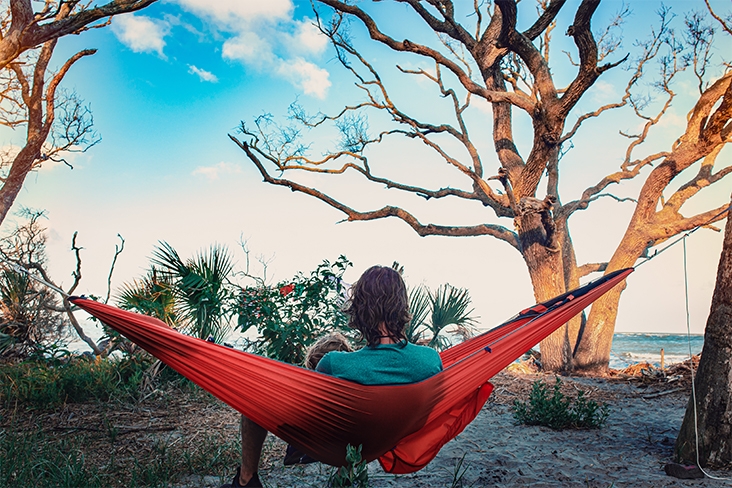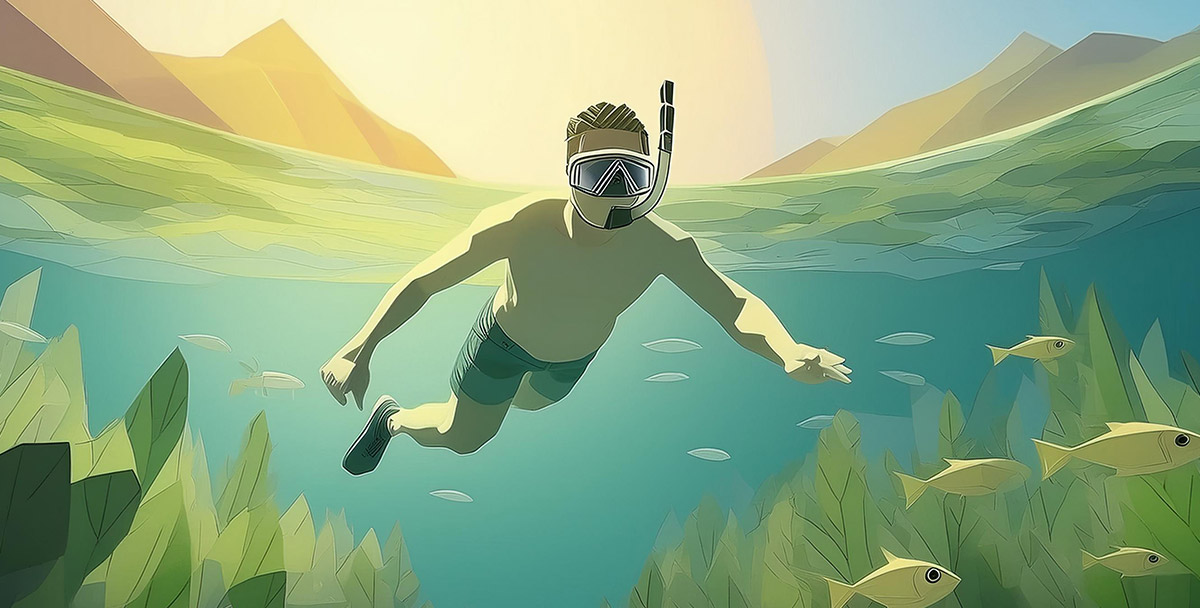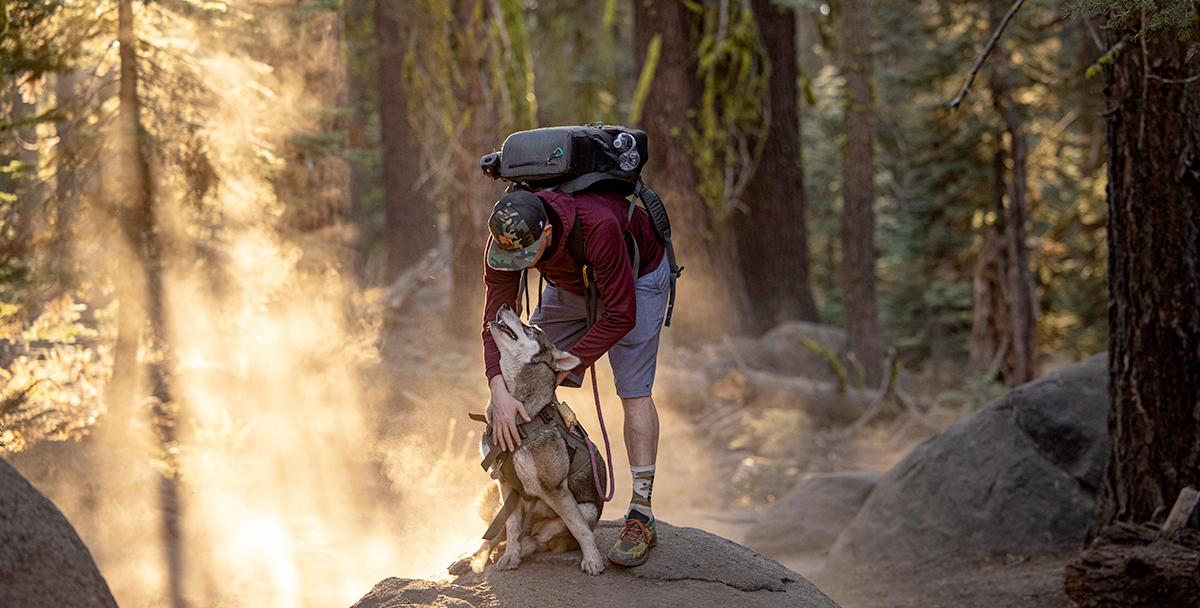When Stephanie Jacobson, owner and photographer of Whimsy & Wilderness Photography, and her husband, Billy, took a beach camping vacation with their children to Little Tybee Island, Georgia – accessible only by boat – the couple knew they were in for some work before the fun could begin.
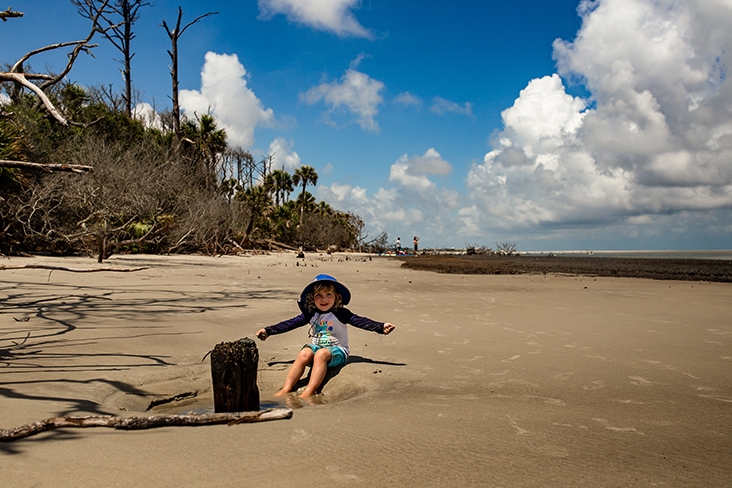
“Planning is critical” for any beach camping trip with young children, says Jacobson, whose kids were just 3 and 5 years old at the time.
And even without kids, beach camping is not something to jump into without some forethought.
We’ve covered the essentials to get you started. Keep in mind that while it’s possible to find a location on the beach, as the Jacobson family did, it may take more effort to get there. More commonly, you’ll find yourself camping near the beach with beach access.
What’s the best time of year to go beach camping?
It depends on the location. For example, late spring through summer is an ideal time for beach camping in the Upper Midwestern states of Minnesota, Wisconsin and Michigan, which are known for their cold, snowy winters.
From late May through August, air temperatures rise to 70 and higher while fresh-water temperatures are lower (and fresh water doesn’t have the dehydrating effects of salt water). A dip in the lake is refreshing during the summer; in the late fall or winter, not so much.

Summer is also an excellent season for camping in the Northeast, with options near the Atlantic Ocean or a variety of fresh-water lakes or rivers.
On the other hand, Jacobson advises against summer beach camping for the regional Southern states along the Atlantic Coast. There, the spring months from April to May and the fall months of September and October are best, she says. During the summertime, the sunshine can be relentless. In the spring and fall, the sun sets earlier and this offers respite from the sunshine and heat.
If you’re interested in pitching your tent in sand throughout the year, the West Coast is your best bet. In particular, California has campsites open year-round, and seasons are broken down by peak (June, July, August), shoulder (April, May, October), and low (winter months) for this versatile state. (For more, see section titled “What are well-known, popular places to camp on or near the beach?”)
Where should I start my beach camping search?
A good place to start is on state and national parks sites. There, you can find locations, reservation options (if available), and other details that can help you figure out the best fit for your needs and wants.
Camping apps make searching easy, and there are many free apps available as well as apps that cost a minimal fee.
With a basic account through The Dyrt app, you can search for camping sites and save favorites for free. A Pro Membership for $35.99 a year gives you more options, such as the ability to choose a route, search offline and other perks.
Hipcamp is another great resource for campers. Filter results by price, accommodations, group size, amenities, activities and more. Once you’ve discovered the perfect spot, use “Instant Book” to reserve it.
How do I find beach camping in a national park?
For any camping adventure in a national park, it’s best to start your search using the Recreation.gov site and then filter your search to “beach camping.”
Recreation.gov also offers a free mobile app, where you can find and reserve campsites as well as access interactive maps and campsite photos.
What’s best to keep in mind about beach camping?
It’s important to be prepared for constant exposure to the sun if you’re camping closer to the equator, where the sun’s rays are more direct, or near an ocean. There’s not a lot of shade on the beach, says Jacobson. (See more in our section on “What are must-haves to bring for beach camping.”)
Another element to be prepared for: tides. You don’t want to put up a tent in the morning only to find it submerged when the tide rises later in the afternoon. So tides should be forefront on your mind when planning any camping by the shore.
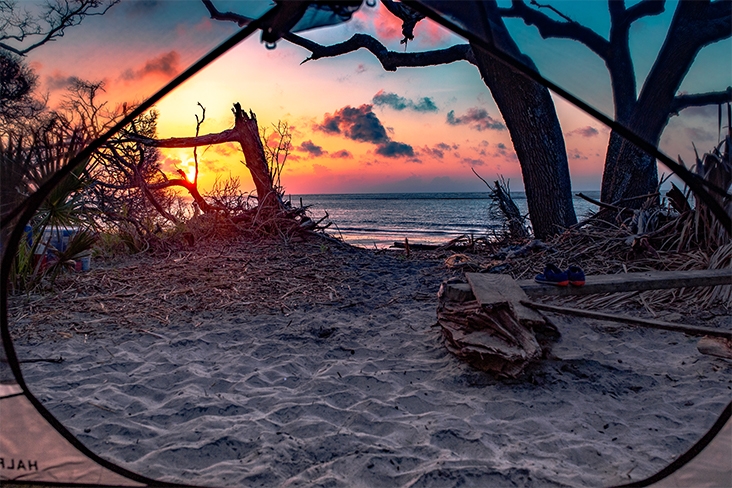
The National Oceanic and Atmospheric Administration (NOAA) website is the place to start. NOAA provides high and low tides by location, including along the Great Lakes and Atlantic and Pacific oceans. It also has up-to-date water and air temperatures, wind gusts and other useful meteorological data.
What are must-haves to bring for beach camping?
Jacobson recommends several essential items to put at the top of your list for camping solo, with a partner or with children. We sprinkled in a few recommendations from The Geeky Camper website to round out the list.
- Sunscreen. Bring one that is water resistant and has an SFP of 30 or higher. Reapply about every two hours and after swimming.
- Potable water. “Water is always the biggest issue,” says Jacobson. “Overestimate the water you’ll need” – especially when vacationing with kids where it’s needed for washing and drinking.
- Extra towels and blankets. For added protection during the daylight hours, “sit with towels over the shoulders,” Jacobson says.
- Water shoes. To protect little feet. “Shells can be sharp,” says Jacobson.
- UFP clothing with sun protection. Jacobson recommends bringing UFP clothing and pieces to layer. Like the desert, the beach can be hot during the day and quickly shift to cold after the sun sets.
- Body or baby wipes. Wipes help clean sand and messes, says Jacobson.
- Camping toilet. “If there aren’t any facilities available, you’ll likely need to bring your own personal camping toilet,” writes Gaby Pilson in her checklist on The Geeky Camper website.
- Tarps. They provide much-needed relief from the elements, according to Pilson’s checklist.
What are well-known, popular places to camp on or near the beach?
California provides many options for camping on or near the beach. But you’ll need to book a spot well in advance of your vacation.
If you’d like to stick with your Subaru and try car camping, Kirk Creek Campground in Big Sur is the place to stay.
Padre Island National Seashore in Texas has a variety of primo beach camping sites – with a caveat: no reservations are accepted, and camping is only on a first-come, first-serve basis.
With Grand Isle State Park in Louisiana, you hit the jackpot of potential beach camping for both pull-through trailers and tents. If you’d like to try your hand at crabbing or fishing, add Grand Isle to your reservation list.
Horseneck Beach State Reservation in Westport, Massachusetts, is a good option on the East Coast. It includes a variety of facilities and beach services, including public restrooms and lifeguards (Memorial Day to Labor Day), with few restrictions. (Sorry – no dogs allowed!) Horseneck Beach would be an excellent choice for a family vacation – fishing, sailing, boating, biking and bird watching are all possibilities.
The Apostle Islands National Lakeshore, Wisconsin, are a great option for beach camping on fresh water. They’re remote, however, and are accessible only by sea kayak, motorboat, sailboat, shuttle service or water taxi.
The Apostle Island’s gateway communities – Bayfield, Red Cliff, Cornucopia, Washburn, Ashland, Madeline Island and Chequamegon-Nicolet National Forest – are a fantastic alternative for beach campers who aren’t interested in traveling to their campsite by water.
Another fresh-water option is P.J. Hoffmaster State Park in Michigan. This park is all about dunes (without the threat of gators, which Jacobson says should be a consideration when beach camping in remote Southeastern U.S. locations).

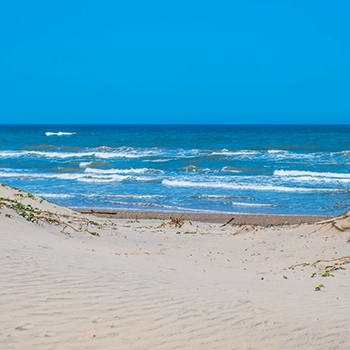




Whether camping on the beach or nearby, remember that sand gets in everything. Before you head into your tent for any reason, wipe off your body, especially the feet and shoes.
Follow the Seven Principles of Leave No Trace.
Jacobson and her family adhere to the Seven Principles of Leave No Trace™. While camping on Little Tybee Island, the children were allowed to admire fascinating discoveries but were not allowed to take them home, adhering to the principle of “Leave What You Find.”
It’s important to follow the principles for any camping trip – but beaches can have fragile and unique ecosystems. During your preparation stage, check to see if you’re in a sea turtle nesting zone, Jacobson advises. Nesting information is generally available by state or region and is compiled by wildlife monitoring programs, systems and networks.
If you find that you’re in a nesting zone, “Don’t leave lanterns on all night,” Jacobson says. On the beach, turtles could be hatching and they’re attracted to the light of the moon reflecting on the water. By leaving lanterns on, this could disrupt their march to the sea.
Beach camping provides memories and fun for families, friends, or solo adventurers. With some up-front preparation and planning, you can have an adventure of a lifetime.
